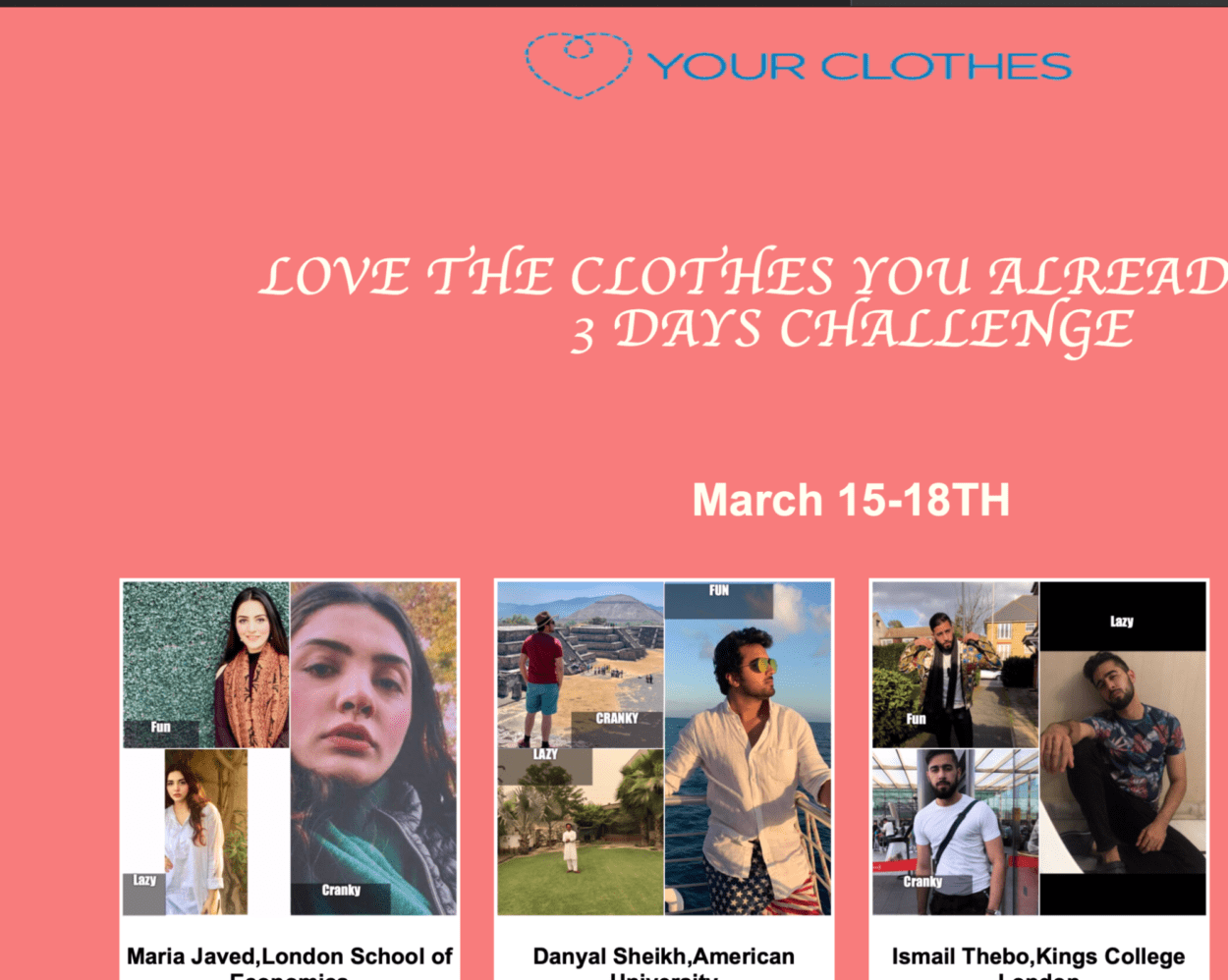Name: Mehr Un Nisa Javed
Date: 3rd March’2019
Professor: Nimrah Syed
Objective: Make a Photo-Essay Zine and a video under 5 mins.
Here is a PDF File of the Photo-Essay Zine and a video for the project:
(The updated video is also in this file)
https://drive.google.com/drive/folders/1_eSTO5tXMQquNxWhECMQH8wj37kvOGUk?usp=sharing
Process: We went to the notions market and Shanghai Bund Market on last Saturday. We left for the market around 9:30 am and came back by 3pm. In both of the markets we took a lot of photos and made a couple of videos as well while interviewing people and the overall, maket. However, we mostly focused on the notions market as it dealt mainly with the wholesalers and we just wanted to focus on one market as it would help us to do some in-depth research.
In class for the workshop we printed out several photos and took them to the class. Over there we arranged them in a way so that a story could be narrated through the photos. Here are some photos of the work we did during the workshop:
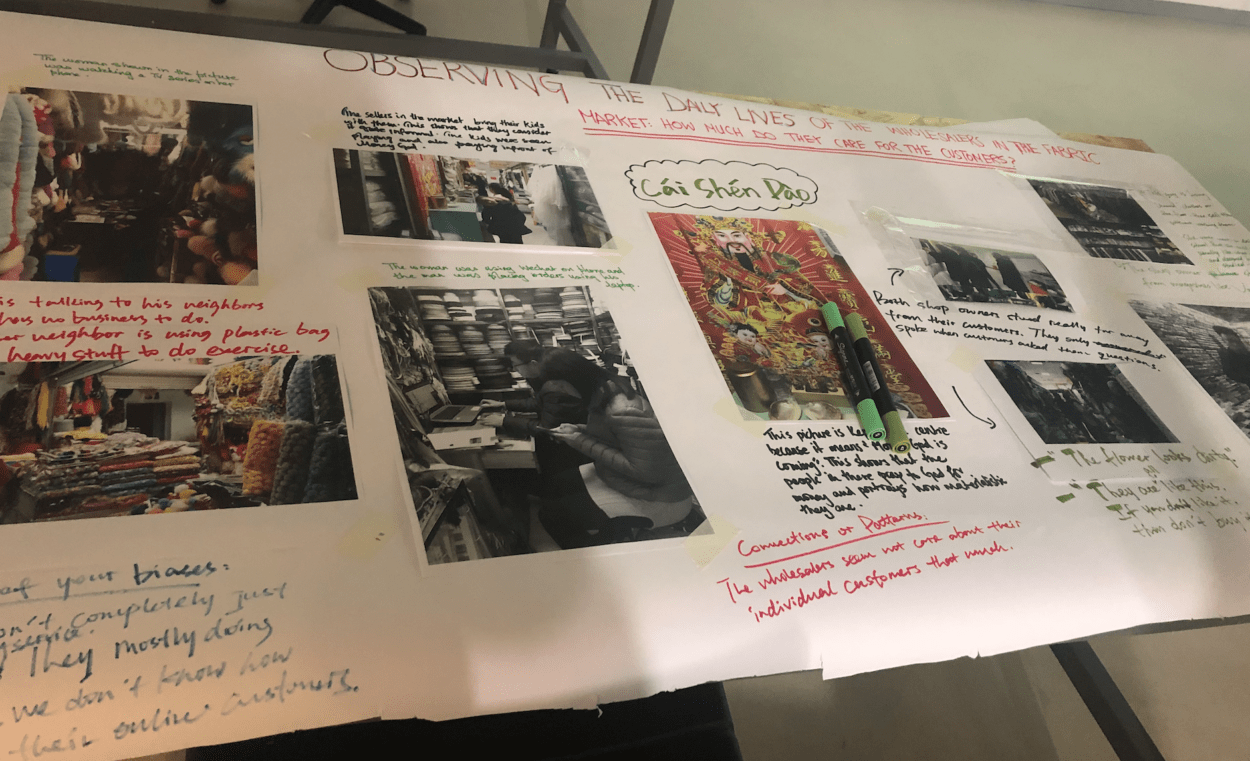
You can see that the picture of The Money God is in the centre as the people only pray for money as they’re quite materialistic. On one side we put the photos of the people just using phones, lifting weights, sleeping in their spare time. Whereas, on the other side there are photos of the people interacting with the customers (we looked at to what extend they were catering the needs/demands of the customers).
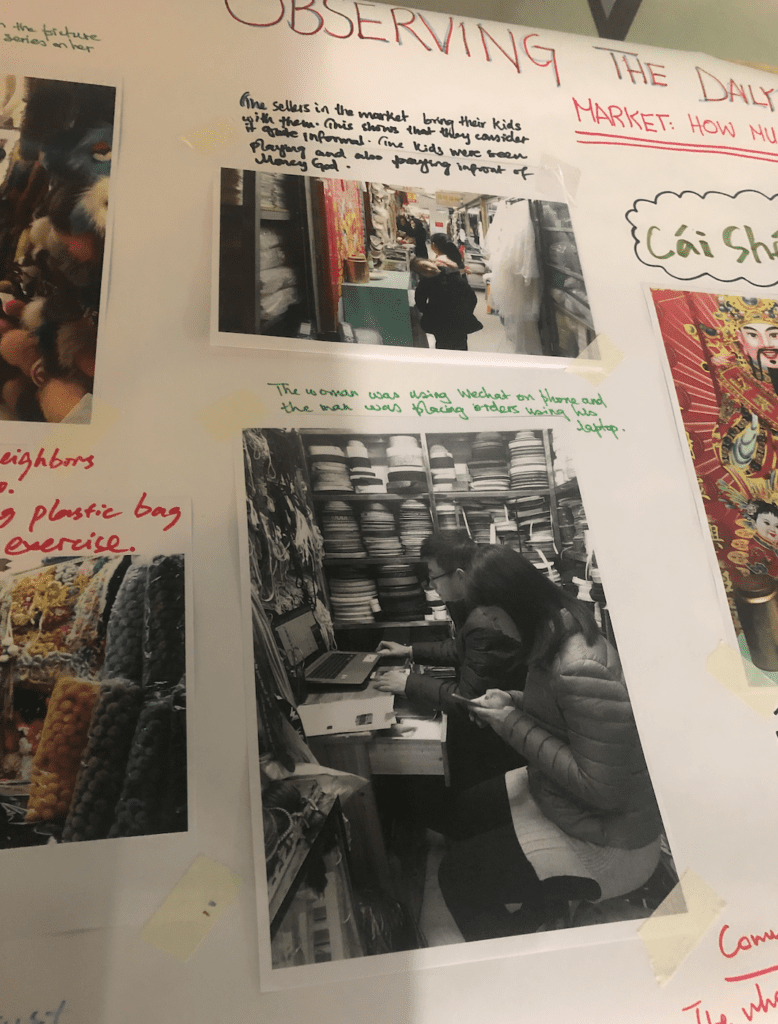
Photo-Essay Zine
For the photo zine we chose so me of the meaningful shots we had and made them tell a story. With the photos we added short descriptions so that the picture could be a bit more explicit. For the video we just showed the notion market where we showed many sellers during their work time and during the time when they were not working. We started out photo-zine with a photo of the Money God and then moved on to our observations. In the zine I tried to have a story for the people and with that I also took a first perspective shot of the shop so that the viewers can see what actually a certain person was selling. I also tried to add description of their stuff which they were selling, how much was the demand for a certain thing, how much was the price of a certain thing and what was the reaction of the people towards different things, how much were the sellers willing to sell to one person instead of bulk selling?
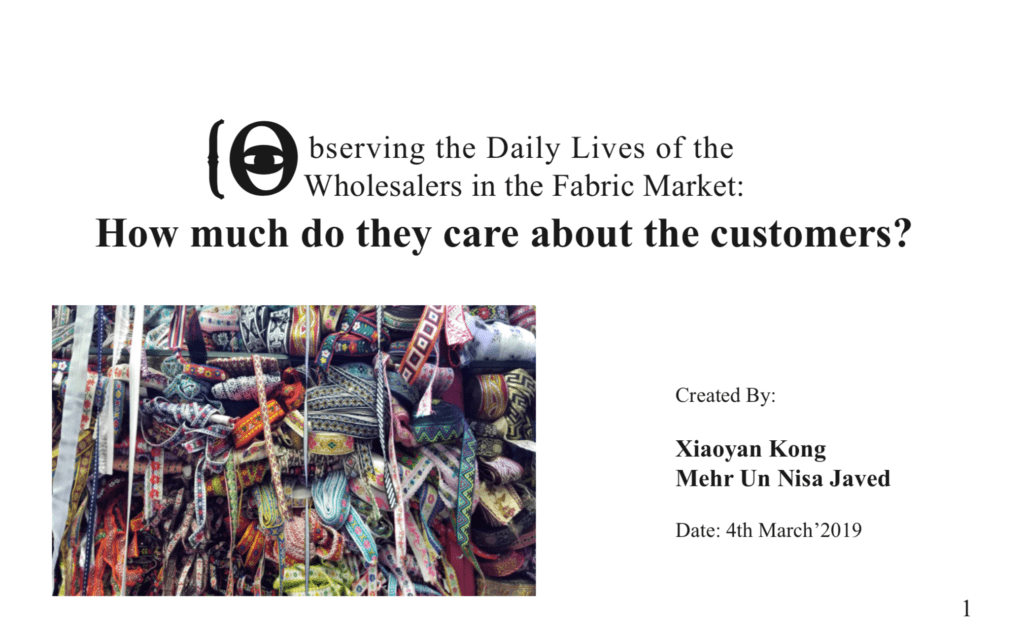
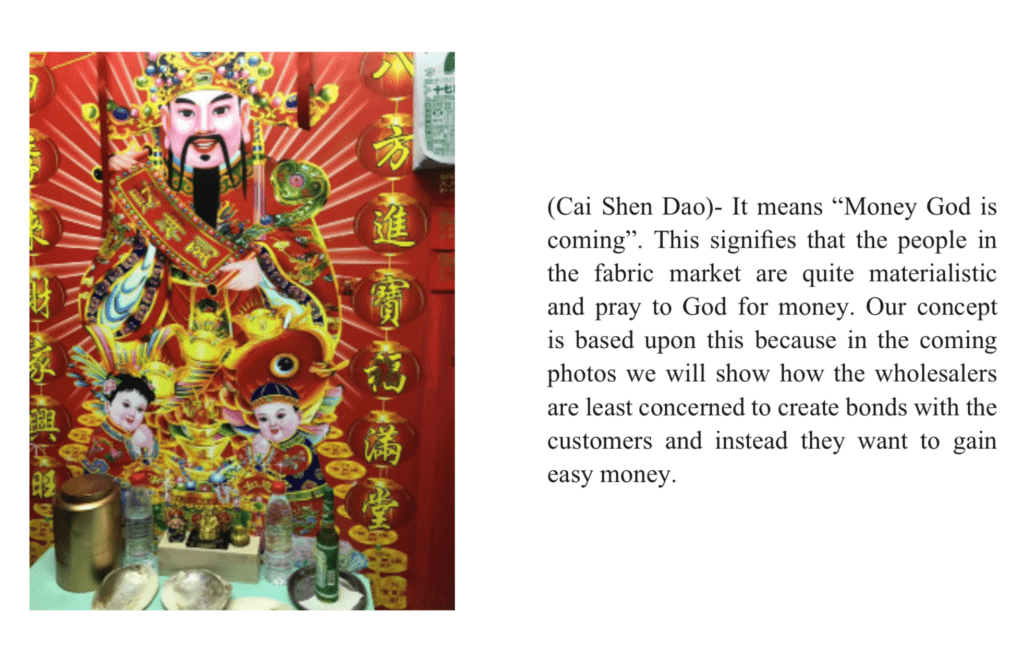
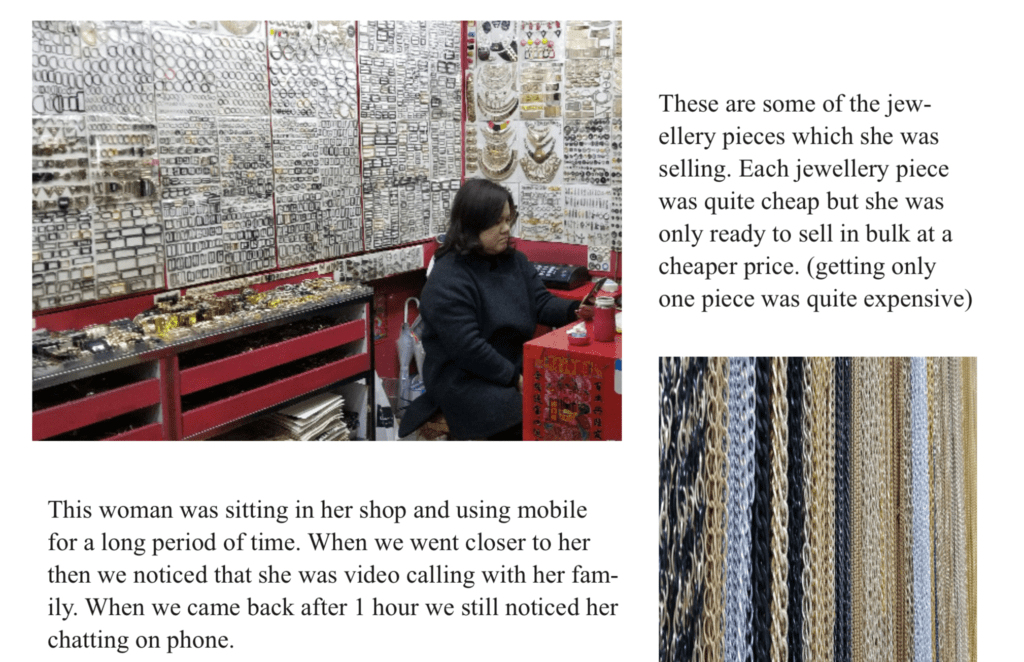
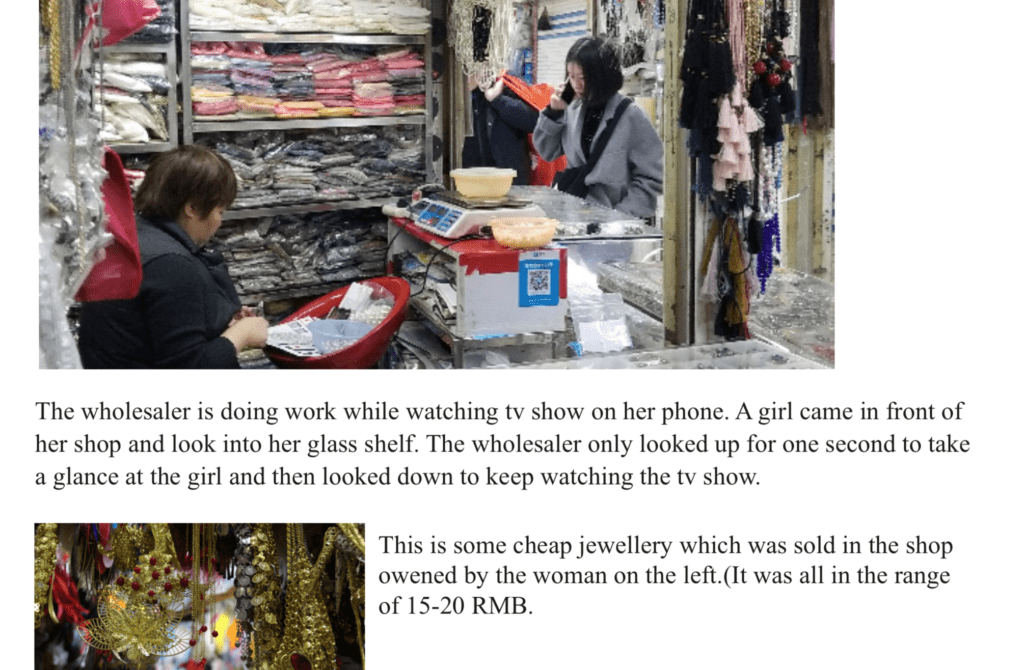
Video
In the video we basically started from the point where we got inside the bus and the moved on towards our research area. We tried to show the notion market only in the video as we only covered that for our research. We also covered a view interviews in the video.
Strengths of the research:
We conducted interviews which were participatory so we could gather wide amount of data
My partner was a native Chinese speaker so we had no issue in communicating with the sellers
Weaknesses:
We conducted the research for a very short period of time. For example, only about 3 hours which is not enough time to observe someones daily life. Maybe how they were behaving was due to their concerns of seeing so many people around them interviewing them. Moreover, maybe a lot of people were using mobile phones, watching videos etc on that day because it was a Saturday morning and maybe in the morning only not a lot of customers come to shop.
